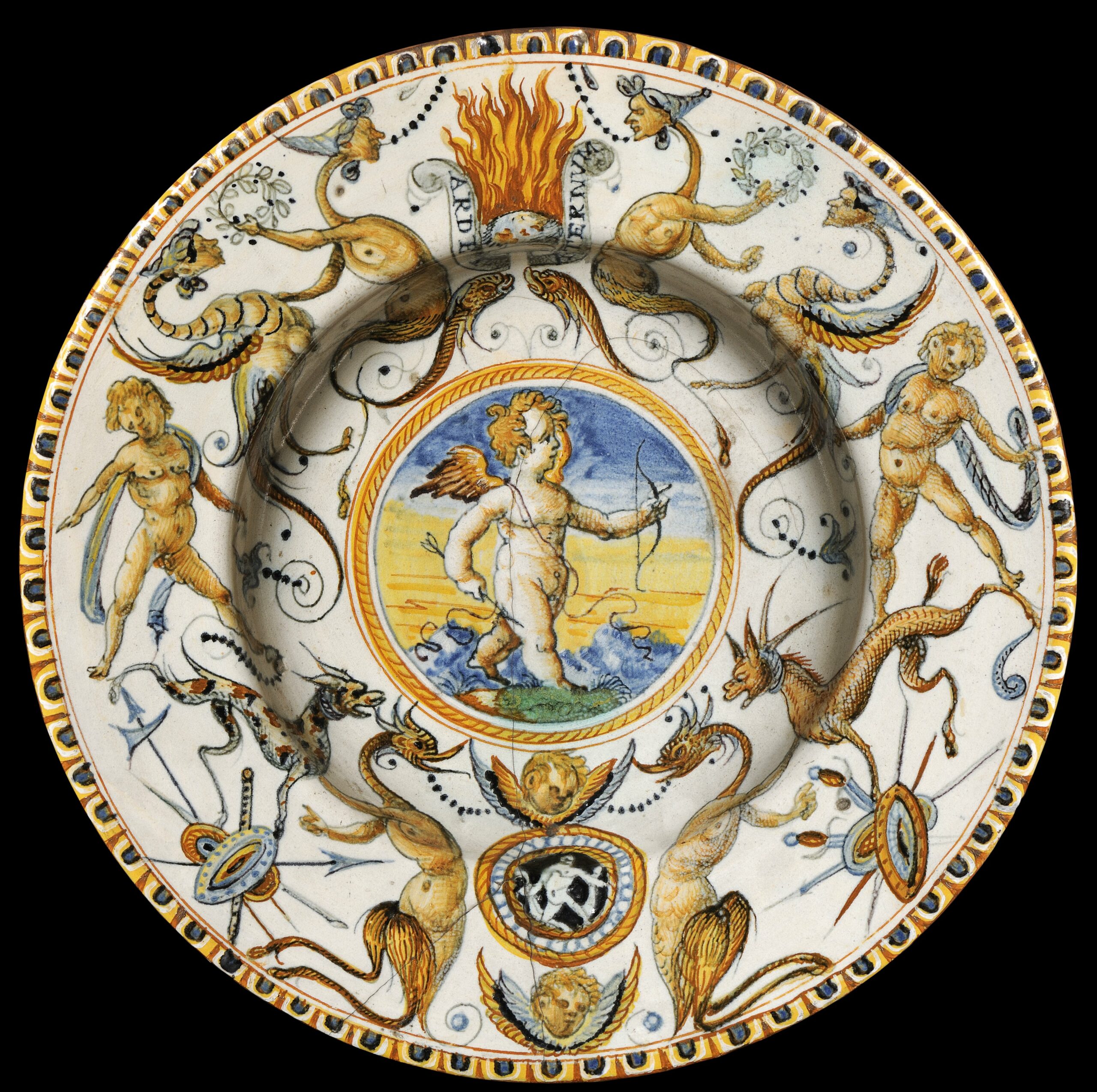On the occasion of the second (1565) and third wedding (1579) of Duke Alfonso II, two maiolica wedding services were made that included all the elements for the decoration of the table, this set of objects in the 16th century were referred to as ‘credenza’. The two services were commissioned respectively in Faenza and Urbino, the most famous and important centres for majolica production. While only a few examples remain of the first (of a service that numbered several thousand!), recognisable by the decoration with the Este-Hungarian wedding coat of arms surmounted by the ducal crown and surrounded by the collar of the Toson d’Oro, numerous elements of the second credenza have come down to us.
The celebration of the third wedding took place in 1579 and the bride was the very young Margherita Gonzaga, daughter of Duke Guglielmo. The credenza, which can be traced back to the Patanazzi workshop in Urbino, is decorated with a raffaellesque pattern, enriched with anthropomorphic figures, harpies and fanciful dragons. Each element forming part of the service is recognisable by the inclusion of the motto ‘Ardet Aeternum’ composed of a strong central flame and two lateral cartouches (their composition is reminiscent of the shape of a lyre) which reproduce the two words of the motto, undoubtedly the flame represents the fire of Love that burns eternally. The same symbol can be found on the reverse of a commemorative medal also coined on the occasion of the marriage of Alfonso II to Margherita, while the recto shows the couple in profile. One of these bronze medals is now conserved in the collections of the Museo di Palazzo Schifanoia in Ferrara.
We know that the service consisted of fourteen different styles of plates, bowls, cups, pourers of different shapes, amphorae, flasks, salt and refreshment bowls.
In most of the dishes that have come down to us, the cavetto is decorated with the figure of the god of Love: Cupid is represented with different attributes such as a bow and arrow, an anchor or with a lute to name a few. While the larger dishes always propose mythological themes in the centre, in which the painted portion is predominant in the composition (see Civiche raccolte d’Arte Applicata ed Incisioni, Castello Sforzesco, Milan inv. no. 4073 and 148; Galleria Estense, Modena inv. 17745; Paris Musèe du Louvre, Departement des Objets d’Art inv. no. 1264 and 1467 – Wallace Collection, London inv. no. C 109 and 110).







